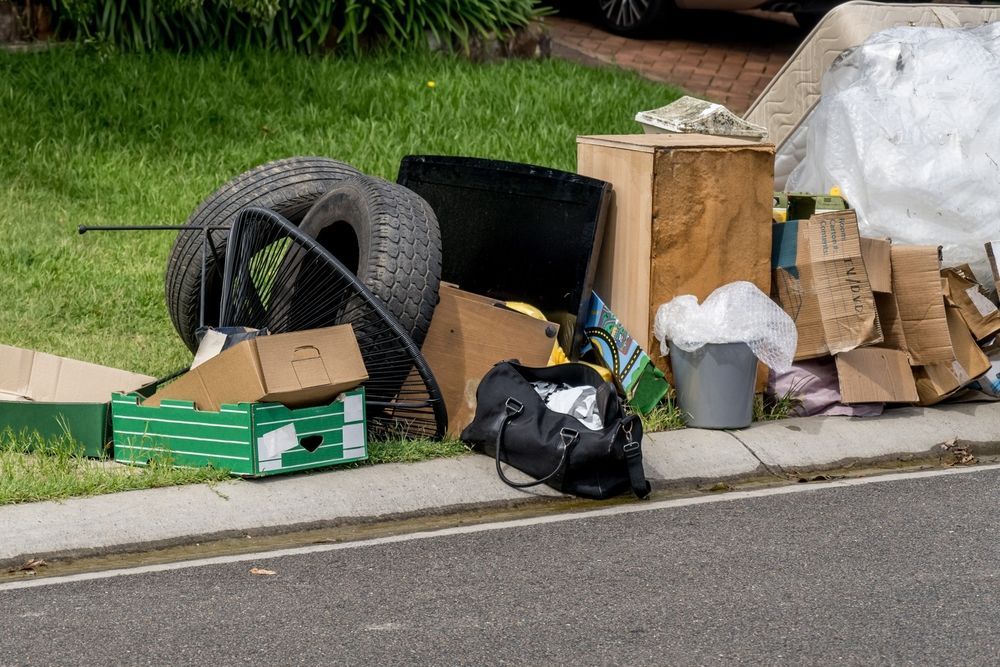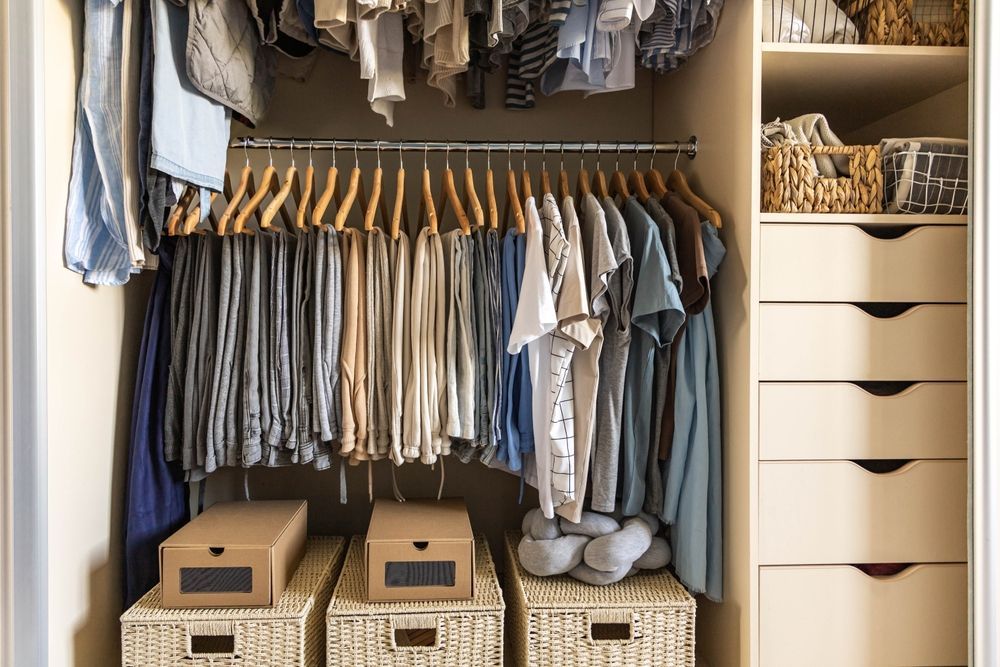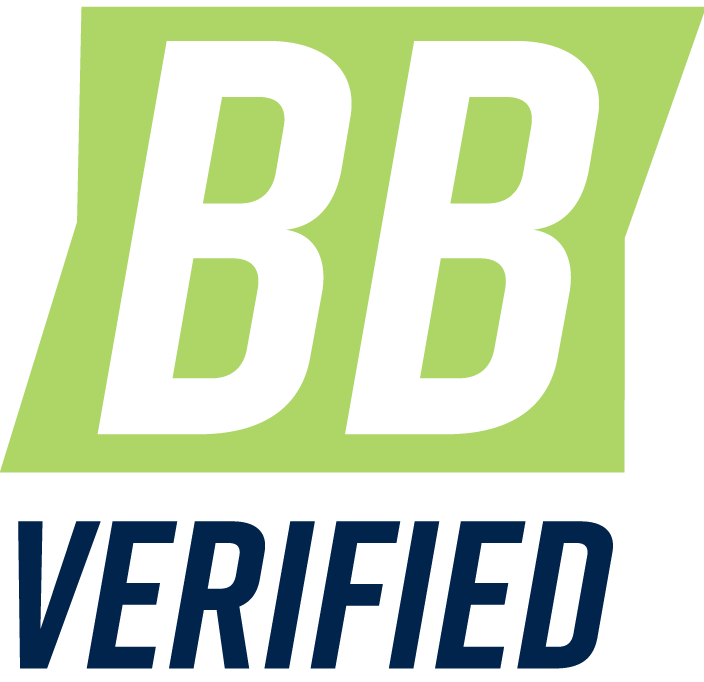Ultimate Guide to Downsizing and Decluttering Before a Move
Downsizing before a move offers a rare opportunity to streamline, simplify, and start fresh in a new space. Moving often reveals just how many items we accumulate over time, from extra furniture to stacks of unread books, and clearing out these extras can transform the entire process. When you reduce the volume of belongings, moving becomes easier, quicker, and less expensive, allowing you to spend less on movers and packing supplies.
Beyond saving time and money, downsizing helps create a sense of calm and clarity. Less clutter leads to a more organized, functional living space where only the most meaningful and useful items have a place.

It’s also an empowering way to let go of the past and focus on what matters most in your new home. With some planning and intentional choices, downsizing can ease the moving process and bring a sense of relief as you open the door to a fresh, decluttered start.
Why Downsizing and Decluttering Is Essential Before a Move
One of the most immediate advantages of downsizing before a move is the potential to save money on moving costs and avoid unnecessary storage expenses. Moving fees are often calculated based on the weight, volume, and number of items you need to transport, meaning that fewer belongings translate directly into lower costs. By reducing what you’re packing, you can often decrease the size of the moving truck needed, or even eliminate the need for professional movers altogether if the load becomes manageable on your own. Fewer items also mean fewer packing supplies, like boxes and bubble wrap, which can add up quickly in both cost and environmental impact.
In addition to saving on the move itself, downsizing can help turn your unused or no-longer-needed items into cash. Selling items through online marketplaces, yard sales, or local consignment shops allows you to offset moving expenses or even contribute toward new furniture or essentials for your next space. Not only does selling provide extra funds, but it also makes the moving process feel lighter and more purposeful. Downsizing can truly add up to a financial win by eliminating what no longer serves you while freeing up resources to support your fresh start.
Getting Started: Preparing to Downsize and Declutter
Set Clear Downsizing Goals
Before diving into the downsizing process, defining what success will look like for you is an important first step. Having a clear vision helps keep you focused and motivated, especially as you make difficult decisions about what to keep and what to let go. Are you aiming to reduce your belongings by half, or is your primary goal to fit comfortably into a smaller home? For some, success might mean eliminating duplicate items and streamlining each room’s contents, while for others, it could mean retaining only what truly serves a clear purpose or adds value to your life. Whatever your end goal, knowing it upfront provides a guiding light through each phase of downsizing.
Create a Realistic Timeline
Effective downsizing doesn’t happen overnight. It’s helpful to pace the process over a realistic timeframe to avoid burnout and make thoughtful decisions. One practical approach is to tackle one room per week or work in small time blocks, such as an hour each day. A slower pace helps you avoid rushed decisions, giving you time to thoughtfully handle sentimental items that may require extra consideration.
In fact, setting aside moments specifically for sentimental items—perhaps dedicating a day to sorting through old photos, keepsakes, or family heirlooms—can make the entire process feel less overwhelming and more manageable.
Develop an Action Plan
Once your goals and timeline are in place, the next step is to establish a concrete action plan that breaks down the process into manageable steps. A straightforward yet effective approach involves four key steps: Assess, Sort, Dispose, and Pack.
- Assess – Start by evaluating what you have in each room. Take stock of items and note duplicates, outdated pieces, and belongings that no longer suit your lifestyle or space.
- Sort – Group items by category and sort them into specific piles: keep, sell, donate, recycle, or discard. This step requires honesty and a focus on the essentials that truly add value to your life.
- Dispose – Act on your sorting decisions by responsibly disposing of, donating, or selling items. For items with sentimental value, consider creative ways to preserve the memory, such as taking photos of items before letting them go.
- Pack – As you finalize each category, pack items carefully, labeling boxes clearly for ease of unpacking later. Packing gradually allows you to keep momentum and ensure that each box only contains the items that made the cut.
- With these preparations in place, each step will bring you closer to a fresh, clutter-free start in your new home.

How to Decide What to Keep and What to Let Go
Deciding what to keep and what to let go can be the most challenging part of downsizing. It requires both practical thinking and a bit of emotional preparation, especially when handling items that have sentimental value. With a focused approach, you can preserve the pieces that either serve a purpose or hold the deepest meaning while ensuring your new space remains organized and functional.
Ask the Right Questions
Downsizing means making intentional decisions about each item you own. To guide you in deciding what to keep and what to let go, ask yourself these key questions:
- Does it fit your new space? In smaller homes or apartments, square footage is often at a premium. If an item, particularly large furniture or appliances, won’t fit comfortably, it may be best to part ways with it. This consideration also applies to decor and storage items that could feel cramped in a tighter layout.
- Does it serve a practical purpose? Items that are functional, versatile, or frequently used are generally worth keeping. On the other hand, items that have outlived their usefulness or are seldom used can often be let go, especially if they could be replaced later if needed.
- Do you use it regularly, or is it sentimental? Distinguishing between regular-use items and purely sentimental ones can be challenging, especially with personal or family heirlooms. While everyday essentials typically earn a place in your new home, sentimental items require a bit more thought and planning (see below).
- These questions help simplify the decision-making process and keep you focused on items that genuinely add value to your daily life or have a practical function.
Practical Tips for Handling Sentimental Items
Letting go of sentimental belongings can be one of the hardest parts of downsizing, but with a few thoughtful strategies, you can preserve memories while freeing up space. Here are some practical tips:
- Digitize Photos and Documents: Physical photos, letters, and paper mementos can take up significant storage. Consider digitizing photos and important documents to create a digital archive that’s easy to access and view. This approach also ensures these memories are preserved long-term, without the risk of physical damage.
- Create Keepsake Boxes: For small but meaningful items, such as childhood mementos or souvenirs, create a dedicated keepsake box. By limiting sentimental items to a box or two, you can set a boundary on what you’re keeping while preserving items that genuinely matter to you.
- Repurpose Heirlooms as Decor: Some sentimental items can double as meaningful decor in your new home. For example, you could frame an old family recipe, display a loved one’s artwork, or incorporate antique furniture that fits the style of your space. Repurposing these items allows them to retain their place in your life in a way that feels both functional and meaningful.
Step-by-Step Guide to Downsizing Room by Room
Preparing for a move is overwhelming enough as it is. Working through the decluttering and downsizing process alongside it.
Kitchen
Kitchens are often packed with duplicates and items that go unused for years. Begin by clearing out expired food items, half-used spices, and other foodstuffs that have been forgotten. Next, assess cookware and utensils, focusing on keeping only essentials. If you have multiples of certain items, like mixing bowls or spatulas, choose the best one and donate or discard the rest. Also, take stock of rarely used appliances, such as bread makers or deep fryers, that may not be worth moving. Streamlining kitchen items will make both packing and unpacking much simpler.
Living Room
Living rooms tend to accumulate oversized furniture and decor that may not suit your new space. Start by evaluating your large furniture pieces, such as sofas, coffee tables, and shelving units, to determine if they’ll fit well in your new home. Consider the style and size of the new living space, and only keep pieces that complement it. For decor items, keep those that add personality or have sentimental value, but avoid overcrowding. Reducing excess items here will make your new living room feel inviting and spacious.
Bedrooms and Closets
Bedrooms and closets can be a big task, as they often hold a mix of everyday clothing, accessories, and seasonal items. Start by sorting through clothing and assessing each piece for current use, fit, and personal style. Donate or sell items that no longer fit or are no longer worn. For accessories, such as bags, shoes, and jewelry, keep only what you love and use regularly. If you’re moving to a smaller space, consider switching to compact storage solutions like under-bed containers or slim hangers to maximize closet space.

Garage, Basement, and Attic
Garages, basements, and attics are often storage zones for items that are seldom used or forgotten. Begin by clearing out anything that hasn’t been used in the last year, as these items are unlikely to serve a purpose in your new home. Seasonal decorations, sports equipment, and tools should be evaluated carefully—keep only what you regularly use or have specific plans for. Prioritize space-saving solutions for essentials, such as shelving units or wall hooks, to keep these areas organized. Downsizing these storage spaces will free up valuable room and reduce the load of items to move.
Tackling one room at a time with a focused approach allows you to make deliberate decisions, so only valuable and useful items make the move with you. This method not only makes packing more efficient but also sets the stage for a fresh start in a well-organized new home.
Effective Ways to Sell, Donate, or Recycle Unwanted Items
Now that you’ve sorted through your belongings and decided what to part with, it’s time to find the best ways to give those items a new home. Selling valuable items is a great way to make some extra cash while donating gently used items and recycling (where possible) is a responsible way to keep unnecessary from landfills.
Selling Online and Locally
Selling items is a great way to offset moving costs and ensure that your belongings find a new purpose. When listing items, be sure to include clear photos, accurate descriptions, and fair prices to attract buyers quickly. For larger items like furniture, list local pick-up options to simplify the process.
Consider hosting a yard sale for an efficient, all-in-one way to sell multiple items. Promote the sale on local social media groups and neighborhood apps to maximize attendance. Make the event organized and welcoming by grouping similar items together and clearly marking prices.
Donating to Charities and Organizations
Donating items in good condition is a meaningful way to help others while downsizing. Start by researching reputable local charities, shelters, and organizations that accept household items, clothing, and furniture. Many charities offer drop-off locations or even pick-up services for larger donations.
It’s a good idea to check each organization’s website to confirm their donation guidelines. For instance, some may not accept large furniture or electronics, so it’s helpful to know in advance. When possible, obtain a donation receipt, as many donations are tax-deductible, offering an added financial benefit.
Recycling Responsibly
For items that are no longer usable or safe to donate, recycling is a responsible option that minimizes waste. Many communities have resources for recycling electronic waste (e-waste), such as old computers, phones, and batteries, which can’t be disposed of with regular trash. Check with local electronics stores or city recycling programs that offer e-waste drop-off days.
For old furniture, construction materials, and household items, look for local recycling centers or specialized programs. Some municipalities offer bulk-item recycling or disposal services for larger pieces.
When you choose to sell, donate, or recycle, you can lighten your load while giving your belongings a second life. This thoughtful approach to downsizing not only benefits you but also supports your community and reduces environmental impact.
Organizing for a Smooth Move
Now that you’ve sorted, pared down, and decided which items to keep, it’s time to get organized for a seamless moving day. With a streamlined set of belongings, packing can be quicker and more efficient, but it still requires a thoughtful approach to make sure everything arrives safely and is easy to find when you unpack. Here are some strategies to help you stay organized and minimize stress on moving day.
Label and Pack Methodically
A smooth unpacking process starts with clear labeling and organized packing. Begin by labeling each box by room, such as “Kitchen” or “Bedroom,” to make sure it ends up at the right spot in your new home. Consider adding labels for priority items that you’ll need immediately upon arrival, like kitchen essentials or bedding. Using a color-coded system or numbered boxes with a master list can help you easily track your belongings, so nothing gets misplaced.
Essential Moving Day Kit
Packing a moving day essentials kit can make all the difference in those first hours in your new home. Gather a bag with toiletries, a few days’ worth of clothes, essential medications, chargers, and important documents (like lease agreements or IDs) to keep with you. This way, you’ll have easy access to the basics without having to dig through boxes, helping you settle in with less hassle.
Consider Professional Moving and Storage Services
With downsized belongings, your moving needs may have shifted as well. Hiring a moving company experienced in downsized moves can make the transition even smoother. Many of these companies now offer convenient haul-away services for items you don’t plan to keep, such as old furniture, appliances, or other large household pieces. This option helps you quickly clear out what’s unnecessary, so you can focus on moving only what matters to your new home.

These companies also often provide greater flexibility with truck sizes, pricing tiers, and scheduling, allowing you to book only what you need. Some even offer “partial load” services, where your items share space in a truck with other loads—an option that can significantly reduce costs.
For items that didn’t make the cut for immediate use but you’re not ready to part with, storage solutions can be a practical alternative. Many moving companies offer short- and long-term storage in secure, climate-controlled facilities, which is especially helpful for seasonal items, heirlooms, or furniture you may want in a future home. Bundling storage with your move often saves both time and money, creating a streamlined, hassle-free experience from start to finish.
Bottom Line
Downsizing before a move is a powerful way to simplify the entire process, save money, and set yourself up for a fresh, organized start. With a clear plan, thoughtful sorting, and careful packing, you can make your transition to a new home smoother and more intentional. Whether you're selling, donating, or responsibly disposing of items, each step brings you closer to a clutter-free life that reflects what truly matters.
For those looking to make the move even easier, professional moving services can provide additional support, from haul-away options to flexible storage solutions. Ready to take the next step? Visit the Better Buyer directory to find a reputable moving company that fits your specific needs, and start planning your stress-free move today.
Discover
excellent
local
businesses!
Our unique content—articles, ratings, reviews, and videos—help consumers make better purchasing decisions while promoting companies striving to provide customer service excellence.
| Recently Added |
|---|
| Accounting |
| Chiropractors |
| HVAC |
| Moving |
| Physical Therapy |
| Plumbing |
| Windows and Doors |
Is
your
business
in our
directory?
Update your business information to become more visible in our directory. Your lead form will also be activated.
Find your company >






